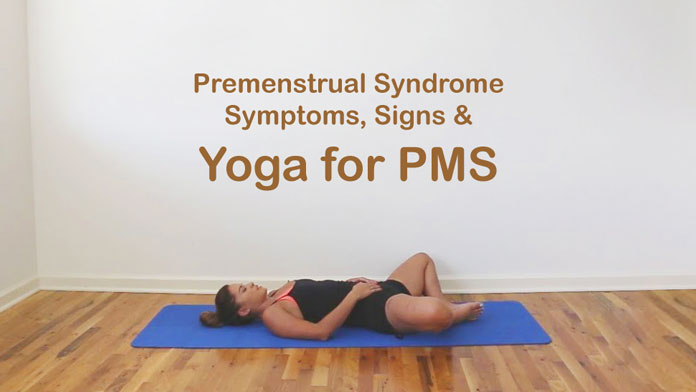By Dr. Rita Khanna
INNER BALANCE….Yoga & Premenstrual Syndrome(PMS)

WHAT IS PREMENSTRUAL SYNDROME
Premenstrual syndrome (PMS) is defined as a series of physical, emotional, psychological, and mood disturbance symptoms in women, which arises a few days before start of menstruation. About 80 percent of the ladies, when they reach the age of 30, experience sudden changes in their nature a few days before starting of menstruation. Symptoms that occur around the time of menstruation are many.
Shashank Asana
Some women are mildly affected, experiencing few symptoms, whilst for others PMS may seriously affect their lives every month. Different conditions and different problems arise in different individuals. These include anxiety, irritability, depression, crying, oversensitivity, mood swings with alternating sadness, anger, headache, migraine, cramps, backache, weight gain, fatigue, bloating, breast tenderness, insomnia, acne, inability to concentrate, confusion, appetite changes with food cravings and lack of interest in usual activities. All these conditions obtain in premenstrual syndrome.
CAUSES OF PMS
Its cause is unknown, but PMS is probably related to changes in the levels of hormones, especially estrogens and progesterone (estrogens excess or progesterone deficiency), hypoglycaemia (low blood sugar), vitamin B6 deficiency, abnormal metabolism of prostaglandin (hormone-like substances), excessive fluid retention, and endorphin (a substance in the brain that provides pain relief) withdrawal activities.
DIET & PMS
Reducing stress, increasing exercise, and making dietary changes around the time of menstruation can prevent PMS symptoms from worsening. Women should be encouraged to eat regular, well-balanced meals. A diet low in salt and sugar, adequate in protein, moderate in fat, and high in complex carbohydrates (fruit, vegetables, and whole grains, good quality protein, nuts and seeds) will all help rebalance and maintain your hormones. Specifics dietary pattens like the following can be incorporated:-
First thing in the morning
Lemon water (lukewarm) with one-teaspoon honey
Before breakfast A glass of cabbage juice / carrot juice + spinach (add some honey into it)
Breakfast Have Munacca (10-15 Nos.) and Figs (2-4 Nos), soaked in water overnight in a glass container. Chew it well and do not throw away the water, drink it. Also dates & fresh fruit
Lunch
Wheat flour chapatti with Soya flour + seasonal vegetables + curd / buttermilk of skimmed milk & salad
Evening
1glass of coconut water / watermelon / cucumber / barley water / fresh coriander (dhania) water / buttermilk
Dinner
Mixed veg. soup , salad & steamed vegetables
Before going to bed
Lemon water (lukewarm) with one-teaspoon honey
Avoid
Sweets, sugar, cold drinks, fried, fatty, spicy, starchy and sugar containing food, tea, coffee cocoa, tinned fruit, white flour, refined cereals.
FURTHER RECOMMENDATIONS
- Drink tons of water (of normal temperature)
- Eat small meals to maintain stable energy levels; this will also significantly reduce food cravings.
- Cut down on salt and salty foods to help reduce fluid retention.
- Wear a well fitting cotton bra if you suffer tense, painful breasts.
- Talk to your family about your PMS so they can have some understanding of the problem. Help them develop attitude to be supportive during this time.
- Make an effort to avoid extra stresses (mark your premenstrual time on the calendar so that you can avoid major activities).
- Adequate rest, relaxation & sleep is essential. A yoga class is ideal.
- Try to develop positive thinking & avoid excessive worry, anger, tension, jealousy and hurrying.
- Thorough overhauling of the whole system under expert guidance is very helpful.
YOGA AND PMS
The practice of regular Yogasanas, Pranayama, Mediation, Shavasana along with introspection and self-examination have their effects on physical, mental and emotional life. Yoga is beneficial in improving general health and helps relieve nervous tension, anxiety, blood circulation, maintaining muscle tone, weight control or reduction and flexibility, and increasing the levels of mood-regulating chemicals in the brain, decrease in fluid retention and increase in self-esteem. While you are experiencing PMS, Shashankasana & a simple breathing exercise called Anulome Vilome can be performed at any time of the day to relax the muscles and nerves, which are under constant stress, strain and irritation. Both are helpful in regulating your hormones and balancing your system & state of mind.
SHASHANKASANA
1. This Asana is performed while sitting in Vajrasana. Keep back, neck and head in a straight line.
2. Sit with your legs folded behind in a manner similar to position occupied by Muslim friends while they sit for ‘Namaz’.
3. Take a deep breath and raise both the hands in one line with head up.
4. Now releasing breath and keeping the head steady in between the shoulders come down right up to the ground so that both the palms of the hands, the elbow and the forehead touch the ground.
5. Be sure that while bending down in this manner both the buttocks remain set between both the heels. They should not be raised.
6. As you go on bending forward, go on releasing the breath.
7. Breathe normally, when the head touches the ground.
8. Remain a witness of inhaling as well as exhaling of breath.
9. Stay in this position, as long as you are comfortable.
10. While you come up, breathe in.
NADI SHODHANA PRANAYAMA
Sit in a comfortable position steadily. Keep the palm of the right hand facing the face. Bend the first two fingers next to the thumb inside. Now put the right thumb on the right nostril and last two fingers of the same hand should be used to press the left nostril. Remember, for the practice of this Pranayama always start & finish the breathing from the left nostril.
TECHNIQUE
1. Breathe in through the left nostril slowly & deeply. Close the left nostril with the ring & little fingers and breathe out through the right nostril gently & deeply.
2. Breathe in through the right nostril. Close the right nostril with the thumb & breathe out through the left nostril.
3. This completes one round of Nadi Shodhana.
4. It can be done five to fifteen minutes according to the capacity of the body.
PLEASE NOTE
The above advice about Premenstrual Syndrome diet and eating habits is offered for general educational purposes only. If you suffer from severe PMS, please consult your physician for specific personal medical & dietary advice.



